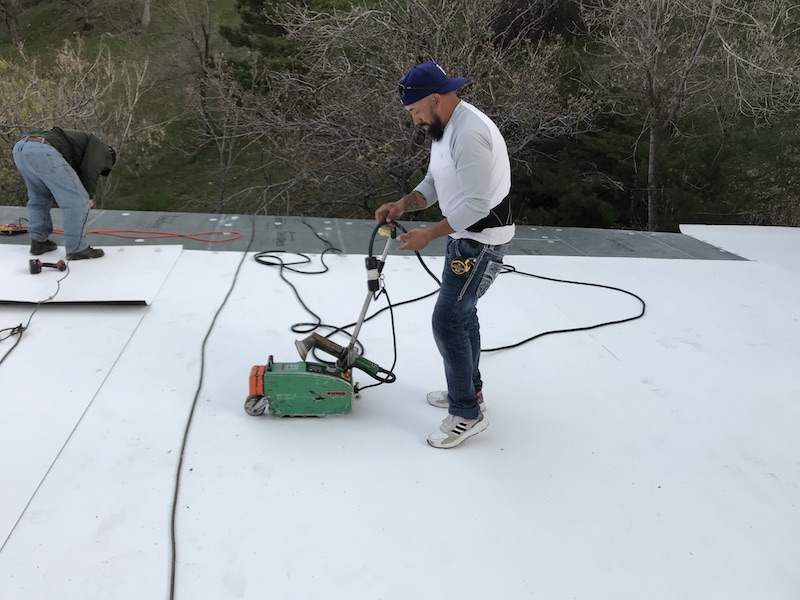
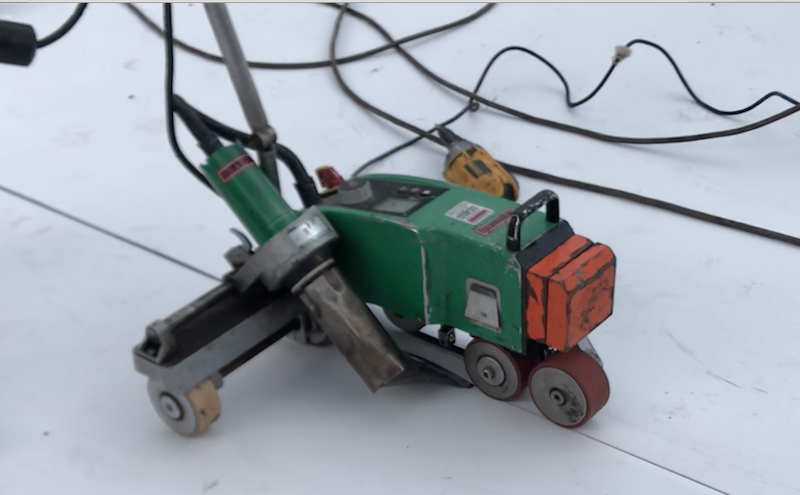
The 240V welder creates a welded seam that is as strong as the field membrane. This particular model costs around $12,000.
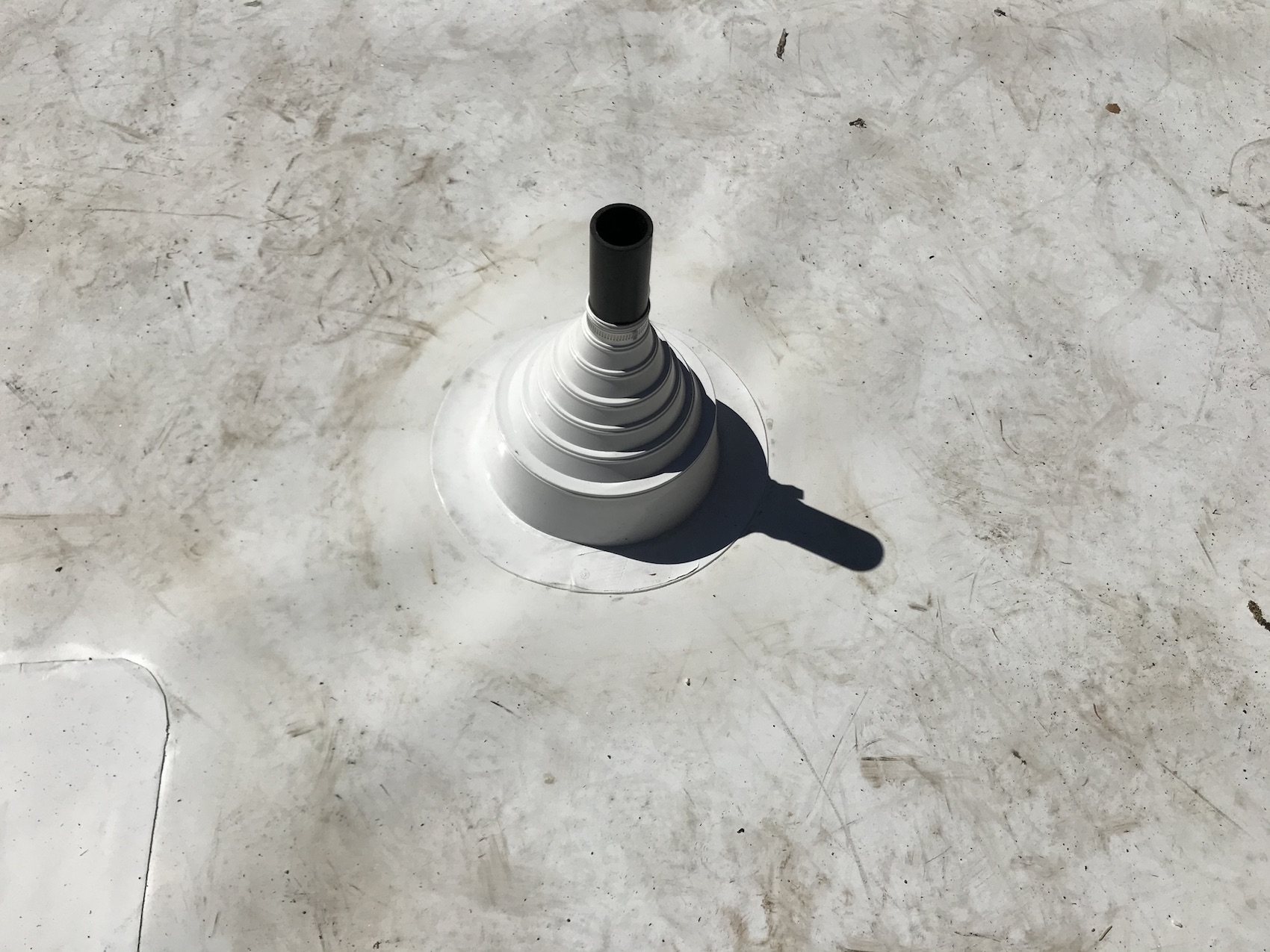
Plumbing pipe flashing. The graduated cone can be cut at different levels for different diameter pipe. Before flashing flanges (or field sheet seams) can be welded, the membrane and the flange must be cleaned.
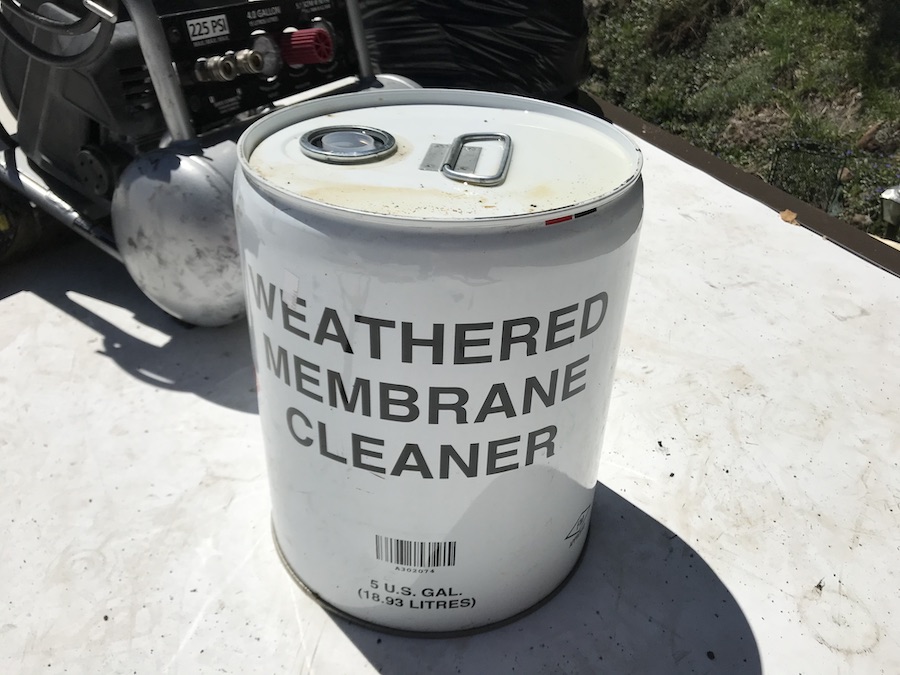
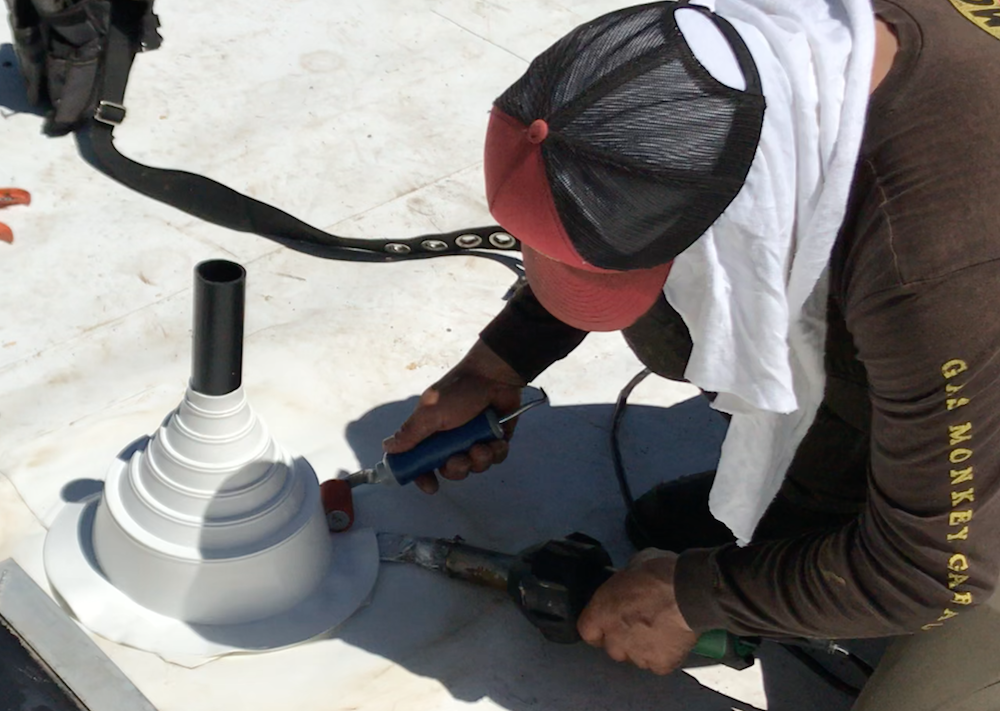
Areas that are difficult to reach with the electrical welder are welded by hand. Hot air is applied to the underside of the flashing while the flashing is rolled into place.
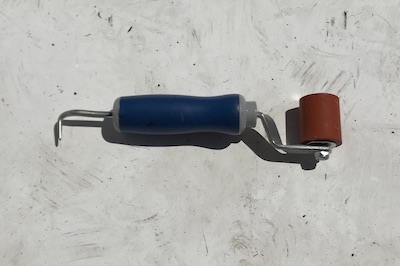
The roller has a pick that the applicator can use to test seams. Inspectors should use a similar pick for the same purpose.
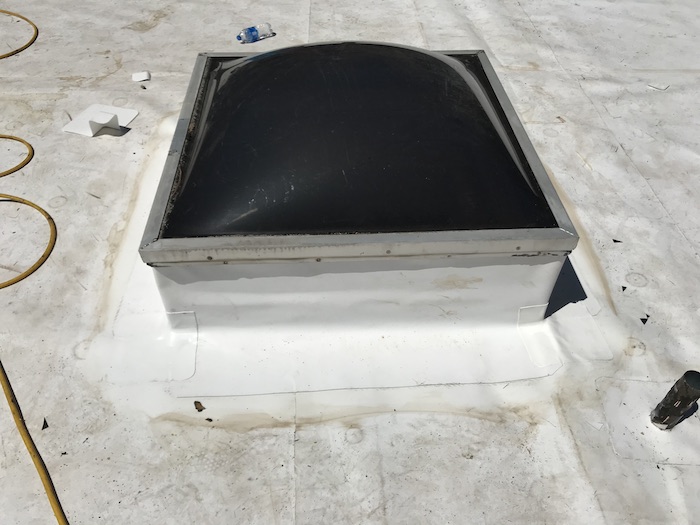
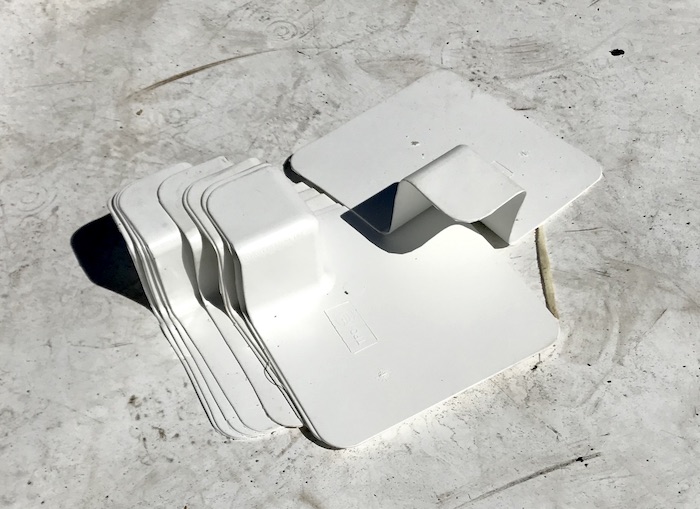
Base flashing is installed at curbs and walls. Pre-formed corner pieces are used to cover the open corners
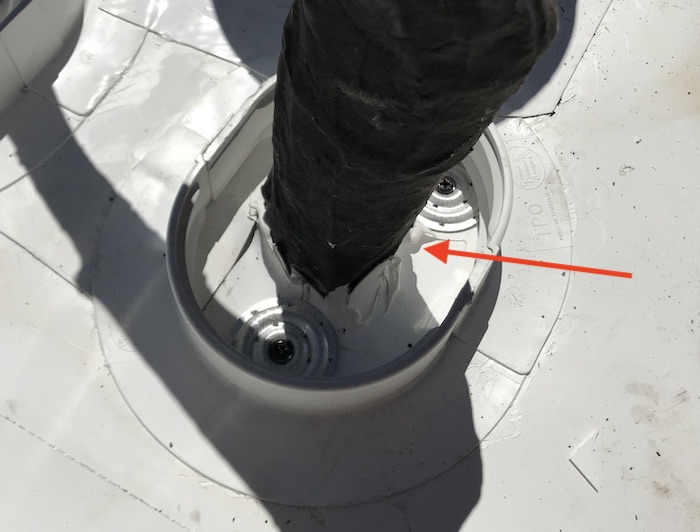

Pitch pans must be caulked at the penetration, then primed, before the actual sealant is applied.
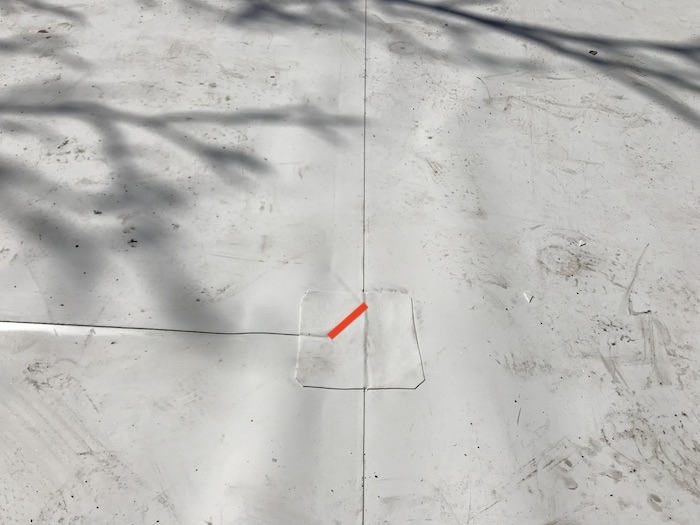
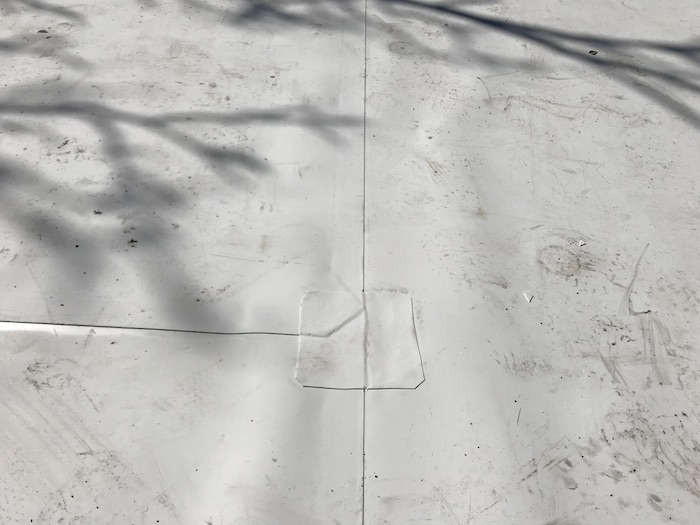
Areas where seams form a "T" should have a patch applied. Cutting off the exposed corner helps reduce membrane stress at these areas.
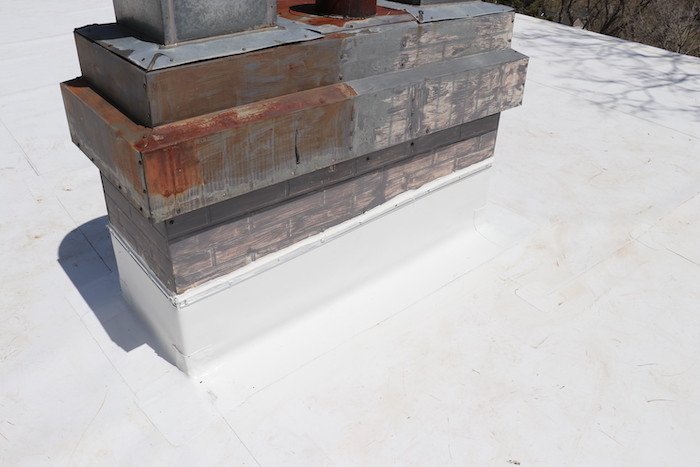
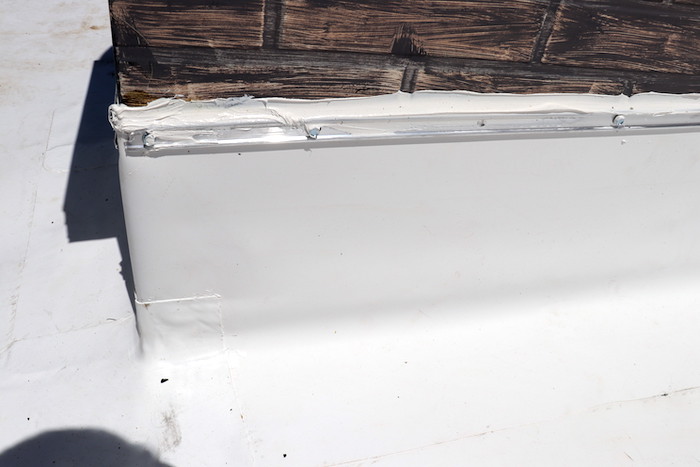
Where membranes turn up vertical surfaces, they end at termination bars. The top edge is protected by sealant or counter-flashing.
